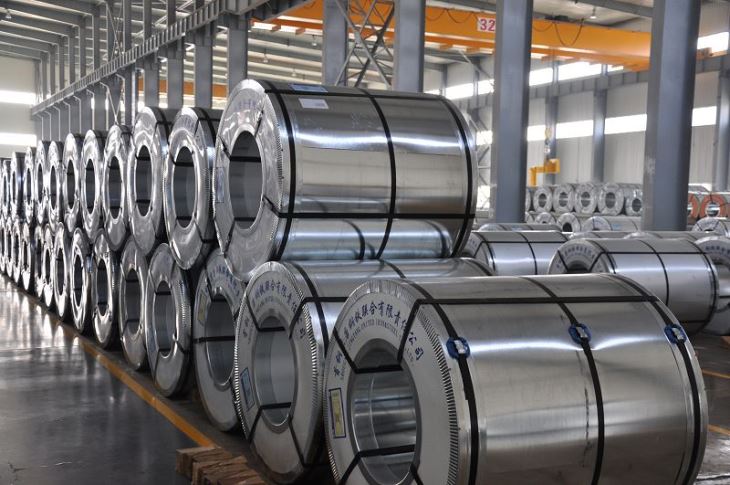The European Commission is imposing definitive anti-dumping duties on imports of hot-dip galvanized steel coils and sheets from Russia and Turkey, it said Aug. 12.
It had found that there had been an exponential increase in low-priced imports, by roughly 1 million mt, over a short period of time, grabbing a market share of 12.9% in 2020.
The products concerned are flat-rolled steel coated by hot dip galvanization with zinc, aluminum and/or magnesium with or without any additional surface treatment presented in coils, cut-to-length sheets and narrow strips with the exclusions of stainless steel, silicon-electrical steel, and of high-speed steels.
These are mainly used in the construction sector for cladding building materials and for manufacturing domestic appliances, deep-drawing and stamping processes and small welded pipes.
The investigation of injury covered January-December 2020 and found evidence that Turkish and Russian material had been sold at 2.4%-39.8% dumping margins, the EC said.
The definitive anti-dumping duty rates, expressed on the CIF Union border price, customs duty unpaid, would therefore be imposed at 36.6% for MMK’s Magnitogorsk Iron and Steel Works, 10.3% for NLMK’s Novolipetsk Iron and Steel Works, 31.3% for Severstal and 37.4% for all other Russian companies.
Turkish HDG exports are now subject to anti-dumping duties of 10.5% for MMK Metalurji, 2.4% for Tatmetal, and 11% for all other companies, including Tezcan.
The anti-dumping measures will remain in effect for five years.
Output by 20 mills in the EU of the same product during the investigation period totaled 9.8 million mt, the equivalent of the 73% of the 13.34 million mt/year capacity, the EC said.
European production was stable in 2017-2019, but dropped 10% toward the end of 2020, partly due to the pressure exerted by Turkish and Russian imports, which increased by 330,000 mt year on year in 2020.
European HDG sales in the free market were 6.59 million mt, capturing 77.3% of the market, with domestic consumption for 2020 estimated at 10.69 million mt.
Imports from Turkey (796,524 mt) and Russia (300,730 mt) represented 9.3% and 3.5%, respectively, while their combined volume and market share increased more than five-fold from 2017 despite a safeguard measure in place during most of the four-year period.
Lower prices
The average import prices from Turkey and Russia, although stable in 2017-2018, were constantly lower than EU prices and then fell 14% between 2018 and late 2020, doubling the gap with European sales prices as a result, the EC said.
The investigation established a weighted average undercutting margin of 4.2%-7.1% by Turkish imports and 5%-20.4% by Russian imports.
The EC, therefore, established a causal link between the injury suffered by the EU industry and underpriced imports from the two countries.
The EU industry’s HDG profit of 0.4% in 2020 declined from 6.2% in 2017 to a level just above break-even, which could not be considered healthy, the EC said.
Over 2017-2018, the European industry was able to take advantage of relatively good market circumstances and the anti-dumping measures in place against Chinese imports, but it started making a loss in 2019, due to high year-on-year increases of imports from Russia and Turkey.
The poor financial situation continued into 2020, after a further increase of imports from Turkey and Russia, proving a clear correlation between the dumped imports and the injury suffered by the EU industry.
In 2019, the European industry managed to increase its domestic HDG sales by just over 200,000 mt, but this was less than half of the increase of respective imports from the countries concerned.
In 2020, South Korea, Taiwan and India were other significant exporters of the product to the EU at 249,000 mt, 184,160 mt and 169,040 mt, respectively, but the bulk of imports from third countries arrived in the EU at prices higher than import prices from Turkey and Russia.
Turkey contested negative impacts
The Turkish Steel Exporters Association contested any negative impact of imports on the grounds that such imports did not set prices on the European market and followed global market trends driven by fluctuating hot-rolled coils prices. However, the EC rejected the claim.
Several parties stated that Turkish and Russian imports never reached volumes that could be injurious since they were below the level of the residual quota of the EU’s steel safeguard quotas.
The EC dismissed this point too, saying that anti-dumping measures addressed a different situation, and safeguards did not prevent the imposition of anti-dumping measures within the free-of-safeguard duty quotas, which are large enough to allow significant import volumes before the safeguard duty applies.
The EC also rejected some parties’ statement that a drop in demand was to blame for the decrease in European production, noting that whereas consumption declined by 467,000 mt between 2017 and 2020, imports from the two countries concerned almost doubled.
It also did not find evidence supporting the claim that ill-timed investments leading to a higher capacity than consumption in the EU was reason for the injury suffered by European producers, and that COVID-mandated shutdowns affected fixed costs and profits of European steelmakers.
— Ekaterina Bouckley






